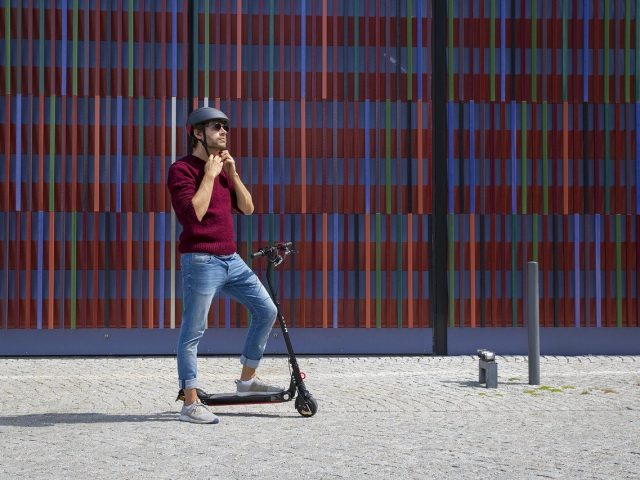ETSC and PACTS set out safety recommendations for e-scooters and their riders
A 20 km/h factory-set speed limit, larger wheels, a ban on passengers and pavement riding, compulsory helmets and a minimum age of 16. These are some of the recommendations set out in a new report on safer technical standards for e-scooters and safer e-scooter usage rules in Europe, published today by the European Transport Safety Council (ETSC) and the UK Parliamentary Advisory Council for Transport Safety (PACTS).
The report is in response to the rapid growth of e-scooter usage over the last five years, and an associated increase in deaths and serious injuries. It takes into account a wide body of available data, hospital studies, vehicle safety testing and research from across Europe and beyond.
The regulatory picture for e-scooters is currently mixed with considerable variations across Europe in rules on minimum age, maximum power and speed, use of helmets and other aspects. The report authors would like to see common technical standards for e-scooters and recommendations for their use harmonised as far as possible.
Among the recommendations from ETSC and PACTS are:
- A minimum rider age of 16, or an age limit aligned with the minimum age for riding a moped;
- Mandatory helmets, aligned with current rules in Denmark, Finland, Greece and Spain. Seven other European countries require children to wear helmets;
- A ban on riding with passengers, on pavements, while using a handheld mobile phone and under the influence of alcohol or drugs;
- A factory-set speed limit of 20 km/h, aligned with current rules in Denmark, Germany, Italy, Norway, Sweden and Switzerland as well as a 250W power limit;
- Anti-tampering measures to prevent use at unsafe speeds;
- A minimum wheel size of 30.5 cm;
- Independent front and rear brakes, lights, indicators and an audible warning device.
While the report itself is limited to technical requirements and rules for riders, ETSC points out that many of its existing recommendations for safety improvements for vulnerable road users, such as 30 km/h speed limits, separated networks of cycle lanes, low traffic zones and higher levels of enforcement, will benefit all road users, including e-scooter users.
Commenting on the publication of the report, Antonio Avenoso, Executive Director of the European Transport Safety Council said:
“E-scooters are now a common sight in European cities, but sadly so too are seriously injured e-scooter riders in hospitals. To break the link between the increased numbers of these vehicles, and the increased numbers of injuries, we need some sensible measures to keep riders and other road users safe.
“E-scooters can play a role in sustainable cities of the future, which must prioritise the safety of vulnerable road users, using modes of transport that are much less risky to other road users than cars, vans and lorries.”
“So while we think e-scooters should go at a safe speed, and their riders should wear helmets, it is also the responsibility of cities to put in place the kind of safe road environment, with a network of separate cycle lanes, and appropriate speed limits, that is essential to greater safety for all.”
PACTS Executive Director David Davies said:
“We are very pleased to work with ETSC on this report. E-scooters are a new mobility option in cities across Europe. In many countries, regulations are still catching up. PACTS and ETSC have set out the main safety implications for riders and pedestrians and the basic regulations needed for safe use.”
The report can be downloaded from the ETSC website at:
For an overview on current e-scooter rules in Europe, see:
https://docs.google.com/spreadsheets/d/14oxJ4KOWbrTsRFYeNGQb65GHtTniQ0Ob1d5QqC4SKT8/
For further information:
Dudley Curtis, Communications Manager, ETSC
+32 485 379945








